Aggretsuko: Sugar, Spice, and Death Metal’s Nice
When Netflix announced the renewal of its original anime series Aggretsuko for a second season, the hearts of animation lovers leapt in joy. Who wouldn’t love an animated red panda venting her daily struggles through the art of death-metal-screamo karaoke? Not surprisingly, many early reviews of Sanrio’s Aggretsuko chalked the series up as a shallow slice-of-life comedy about young people’s professional and personal lives. With little but a foundation of “kawaii” character designs, the series could be mistaken as just a series of one-shot, fluffer episodes without an overarching plot.
But cuteness shouldn’t condemn a series. Even if it could, there’s more to Sanrio’s stylized animation, and the “kawaii” aesthetic in general, than just being sweet.
Netflix’s Aggretsuko has captured the hearts of every Hello Kitty lover who ended up with a miserable office job and overpriced rent. As one of Sanrio’s latest character designs, Aggretsuko follows the life of an adorably anthropomorphic red panda named Retsuko, whose oppressively misogynistic boss and frustration with her romantic life lead her to blow off some steam in a strikingly unexpected manner: death metal karaoke. Other than the humorous contrast between her nonthreatening, sweet character design and her hardcore hobby, the show highlights the sexist microaggressions Retsuko faces in her office workplace. While social expectations prevent her from speaking up for herself, she reclaims her rage through nightly sessions at a karaoke bar, where she drops any facade of feminine passivity in favor of absolutely raging out.
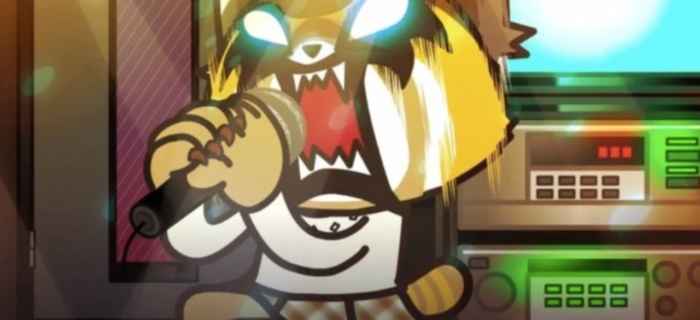
The series has been hailed for its cheeky humor and insightful critique of workplace social politics and feminine expectations, but many reviewers find it lacking a depth that other short anime-style shows still manage to reach within the 15-minute episode mark. IndieWire criticized the lack of major character development for Retsuko, likening the series to “more like filling up on Costco samples than a more substantial series binge.” Similarly, the New York Times quickly categorized it as not “the most substantive show — one could accuse it of being basically a one-note GIF generator, conceived to attract angsty millennials.” But while the series lacks the triumphant ending viewers might expect, perhaps with an “empowering…liberation from that toxic environment,” it presents a reality for many working women around the world who cannot afford to leave abusive or discriminatory workplaces.
Aggretsuko juxtaposes these harsh realities with an animation style that harkens to Sanrio’s early days at the forefront of “kawaii” culture. It isn’t an accident that the characters’ cuteness coincides with how they are expected to behave. Whether purposefully or unwittingly, this show stands at the intersection of gendered social expectations, sexism, and female empowerment–all through a medium that is powerfully cute.
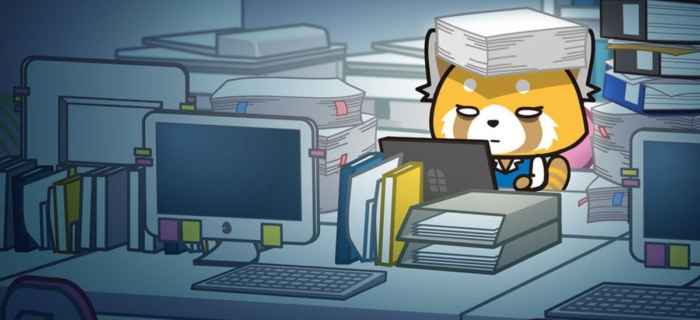
Sexism in the Workplace: A Harsh Reality
Sexism and workplace discrimination continue to plague working women around the globe, making Retsuko’s seemingly impossible battle instantly recognizable for female audiences in particular. South Korea, Japan, and other east Asian countries in particular struggle with a workplace culture that values meekness and the politics of politeness, especially in young female workers. Women in Japan, for example, face particular workplace discrimination and difficulty with upwards mobility due to traditional business customs surrounding seniority, long working hours, and the absence of female leaders. Women tend to be concentrated lower in the employment hierarchy with men dominating the upper echelons of business management. The numbers show a clear gender discrimination in office workplaces: the gendered wage gap in Japan sits at 24.5%, with women making up only 13% of management positions. Three-quarters of Japanese companies have no female senior executives–therefore it is no surprise that women in Retsuko’s position imagine their futures as housewives, rather than career women.
Aggretsuko illustrates but also actively combats some of these norms. Retsuko’s treatment is obviously gender-based from the outset of the series, which often depicts her working overtime, pouring tea for her male boss, and facing public humiliation for minor mistakes. However, two female, senior office secretaries have enough influence over the male bosses to chastise Retsuko’s supervisor for his mistreatment of her–an honest acknowledgement of the possibilities of a changing work culture.
The show also tackles the expectation of gender-based meekness in relationships, too. Influenced by gender roles and inescapable pressure to leave the workforce to marry, Retsuko endures a one-sided relationship with a physical toll. The blisters on the back of her ankles from wearing cute shoes to impress her boyfriend present a perfect metaphor for the entire series as a whole–the costs and consequences of performing femininity are just part of daily life as a young professional woman.
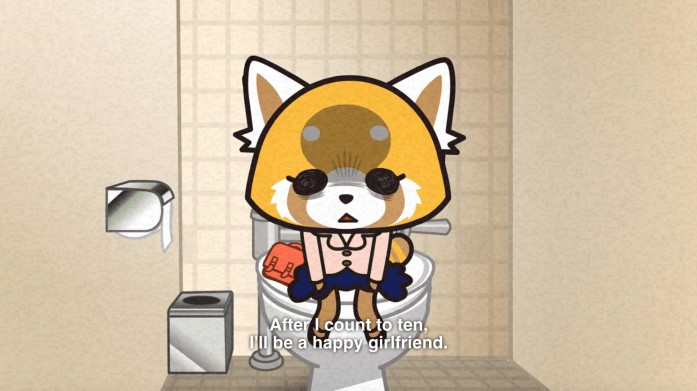
Kawaii, Sanrio, & Empowerment
With its feminist overtones and thoroughly comedic coverage of actual issues in the workplace, the show also tackles a stylistic challenge: cuteness. The show somehow adeptly straddles the relatable slice-of-life comedy genre with only slightly hyperbolic first-world problems–and with absolutely huggable-looking animal characters. And, no, this is not to its detriment, despite its detractors. Cuteness plays a major role in the success of Aggretsuko as a series. “Kawaii” culture and its associated aesthetic are powerful tools for girls and women to unabashedly re-embrace their femininity, even casually in a Netflix series.
The term “kawaii” comes from the term “kawayushi” meaning shy, small, or vulnerable, and coincided with the rise of “shoujo” as a term for girls of the ages between puberty and marriage. Around the same time, a popular handwriting fad, burikko ji, or “fake child writing”, became associated with this demographic. Known for its cartoonish, rounded-characters and a horizontal writing style, burikko ji and shoujo quickly became associated with the intersection of youthfulness and cuteness–which Sanrio capitalized upon, creating iconic cartoon characters like Hello Kitty (Decatur). Sanrio’s creations launched a global obsession with everything kawaii and a culture surrounding the consumption and performance of cuteness. Kawaii culture became “not only about owning cute objects but also about becoming a cute object through accessories and child-like behavior” (Decatur), a concept with was both hailed and criticized for its impact on youth.
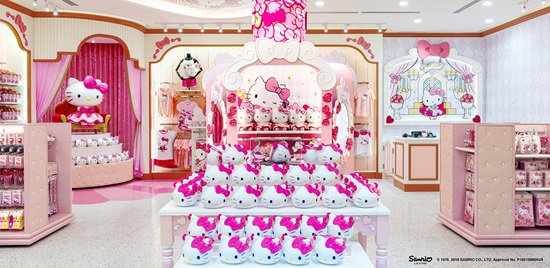
In feminist circles, kawaii culture has been considered an avenue of rebellion against a society obsessed with the seriousness of adulthood. “Kawaii culture is viewed as a time of freedom, and this individual freedom is seen as unattainable for adults in Japanese society” (Decatur) as they are no longer part of a youthful demographic that is allowed to act childish or carefree. Consuming kawaii culture to become kawaii oneself was seen as both a refusal to grow up and as an attempt to assert individuality in a largely collectivist Eastern society. Embodying the kawaii style enables a young girl to “transport…to a positive space outside the boundaries of Japanese society” where they can escape the harsh realities of a stringently patriarchal society.
Others contend that beyond escapism, kawaii culture empowers young girls to reframe daily interactions through femininity, giving them the combative means to make their space in an otherwise hostile world. As the key supporters of this trend, the popularity of kawaii afforded young girls and women power as consumers influencing the expansion of a global market, and as an intrinsic metric of their self-worth. Selecting and purchasing a kawaii item flips the dynamic of their treatment in society: the cute, meekly-owned girl becomes the owner of something else meek and cute. Finding power in owning cute things and controlling how they are perceived in a society that aims to reduce them to specific roles offered a new generation of young girls and women a newfound freedom.
Detractors of kawaii culture have noted the tendency of hypersexual portrayals of school-aged girls, and question whether the performativity of cuteness is less empowering or radical, and more as a way of fitting in with a new mainstream of cuteness. A major flaw in the enactment of kawaii culture is the potential for objectification of its target demographic: young girls and women. If cuteness becomes associated with becoming a cute object, it opens the door to dehumanization and discrimination against girls, who already face misogyny, by reducing them to cute objects. It conveniently meshes with the patriarchal expectations of women in their everyday behavior and treatment–and reinforces an expectation of shyness and meekness, one that Retsuko, like many working women, experience.
For critics of Aggretsuko, kawaii culture today feels tired and a bit played out; perhaps becoming so widespread and global, Sanrio’s characters and its trademarked kawaii aesthetic are no longer seen as individualistic or rebellious, and instead reinforce the norms it was originally used to combat.
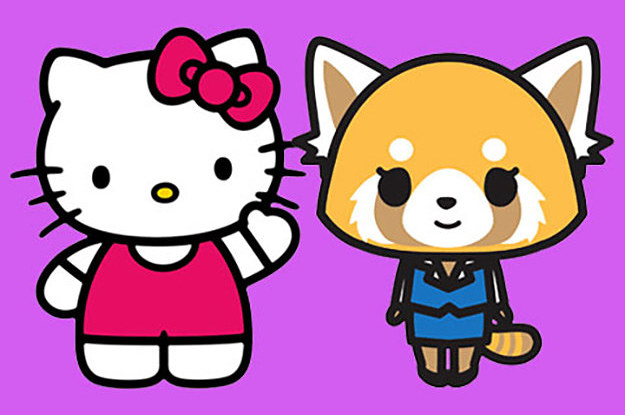
But in the context of the series as a whole, Aggretsuko‘s kawaii aspect is suitable–not just for the humorous contrast with Retsuko’s death metal rage-out personality, but in the context of a young female adult struggling to transition from girlhood into adulthood. Cuteness is a tool for the show to display Retsuko’s apparent fragility, vulnerability, and childishness–all aspects of the traditional kawaii aesthetic. The juxtaposition of Retsuko’s apparent fragility with her inner fire is encouraging, because it ultimately dismantles the link between cuteness and vulnerability. The “cute designs” of all of the characters mask individual, independent motivations and personalities that aren’t all sunshine and rainbows like an audience would expect. Tsunoda, for example, looks doe-eyed and adorable, but masks her inner scheming and shallowness; Fenneko, a cute fox, is sweet-faced but somewhat stoic and suspicious of others. The office gossip, Kabae, is a sweet pink hippopotamus…but might be an international criminal. Throughout the series, Aggretsuko lures the audience in with its kawaii aesthetic, but none of the characters are as meek or naive as they appear.
Don’t Be Fooled By the Cute Panda
Aggretsuko is more than just sugar and death-metal-spice, though. Despite the temptation to reduce the show to its kawaii aesthetic, there’s some real heart in there. In just 10 15-minute episodes and a holiday special, the animated Netflix show manages to convey a subtle arc of character growth. Retsuko’s misgivings are instantly relatable, but not so dire or unsolvable that watchers become seriously concerned about her future. Like any good slice-of-life anime, Aggretsuko includes side characters that everyone can recognize from their daily life. Watchers groan alongside Retsuko at obvious workplace brown-nosers, like Chief Komiya, and shake their heads at Kabae when she spills the beans about an office rumor. While some of her female coworkers simply brush off the expectations of the job like Fenneko, others flirt their way to acceptance, like Tsunoda. She even tries to take advice from her horrendously sexist boss. Retsuko attempts these different strategies to endure the misogynistic belittling of her boss and humorously fails. She flirts poorly, tries to become Instagram famous, daydreams of quitting her job, and attends social mixers, all in an attempt to “find” herself–not just in her workplace, but in her young, independent adult life.
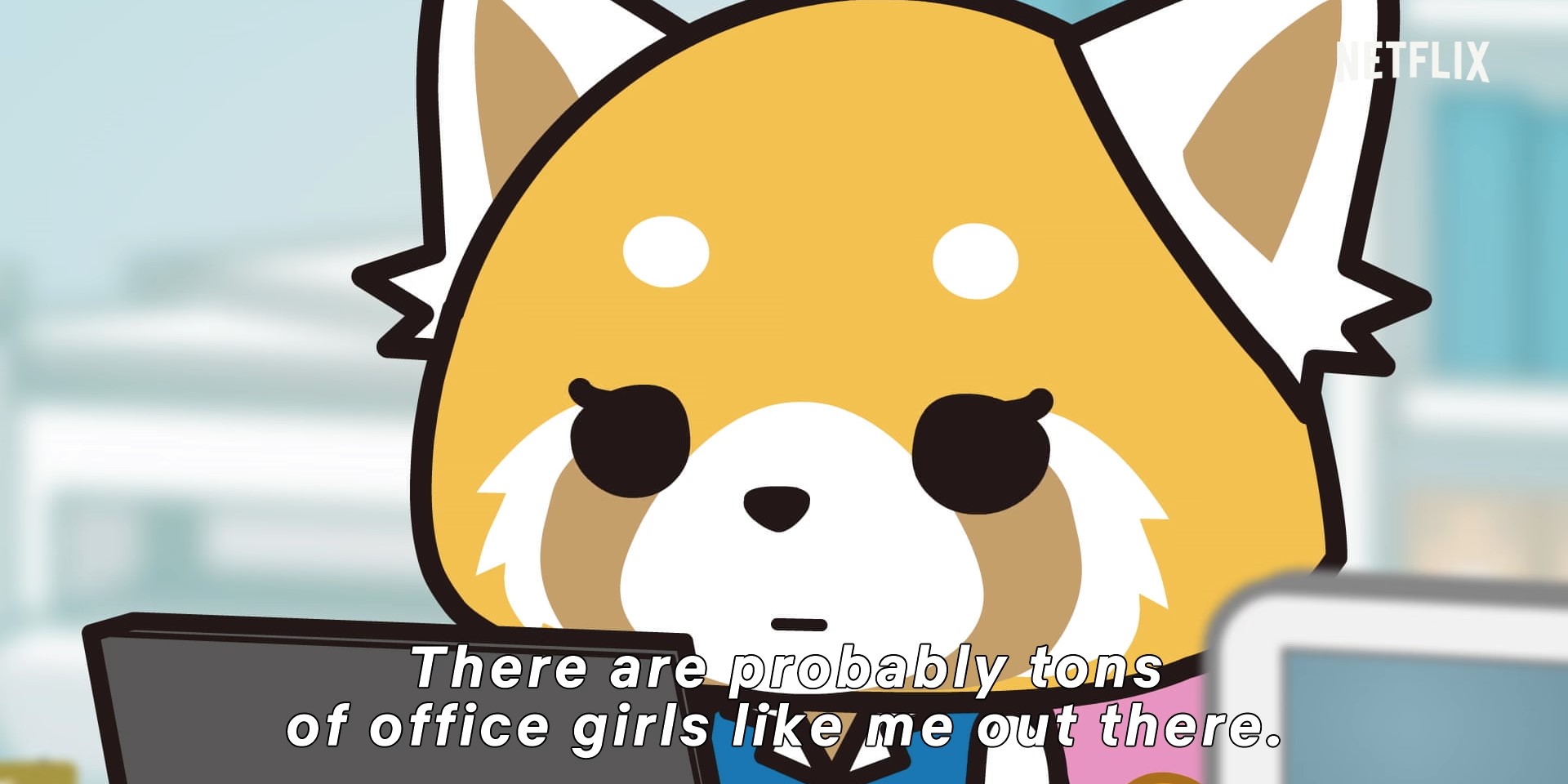
Retsuko’s realization that she can’t daydream her way out of her workplace misery adds depth to the otherwise one-note dark humor of the series. She realizes her image on social media isn’t more valuable than time spent with her real friends. She befriends two career women at her company, vaulting the restrictive social boundaries that prevented her from approaching them. All her relationships with other women in and out of the office deepen and show signs of a support network that casts aside the social expectations she rails against during her karaoke sessions. She starts and ends an unsuccessful relationship, learning something about her boundaries in the process. And while she doesn’t quit her job or finally resolve any of that pent-up rage–spoiler alert!–perhaps she does something more profound. As Retsuko slowly reveals her secret pleasure for death metal karaoke to her friends and coworkers, she actually allows herself to be vulnerable. She learns to trust and rely on those around her.
Aggretsuko‘s Retsuko confronts the coming-of-age genre with the reality that many young women are still “figuring it out” well into their twenties…and with the help of their friends, they’re going to be okay. While the show’s sickly-sweet character designs may feign the appearance of shallowness, the series puts in the legwork to develop Retsuko as a growing young adult who you just can’t help but root for–i.e., a perfect underdog. Er, underpanda.
What do you think? Leave a comment.




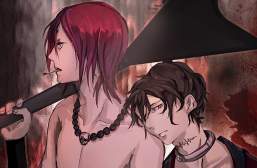
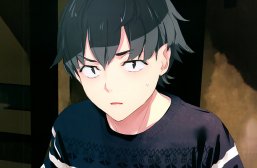
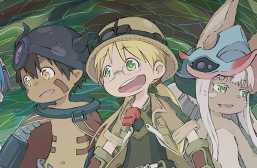
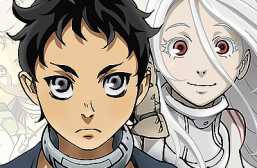
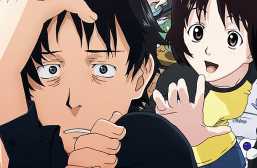
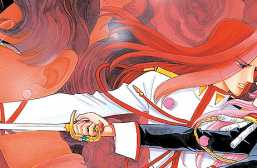
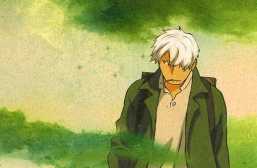
Haven’t watched the show yet, but I’ve had a lot of interest. Gotta pull the trigger. Great analysis! Looking forward to checking it out.
I like it, but I think the problem is the show tends to show some of the Japan bias. Where working in a dead end office job you hate is realistic rather than trying to do something to make you happy. And dealing with a sexist boss is just something you have to deal with.
There’s a pretty harsh work culture in Japan, would be nice if they were a little more open to reflecting whether that’s always a good thing.
Unpopular opinion perhaps, but I really love the English dub of this show. They’re all incredibly on point to their personalities (right down to Fenneko’s laugh). Even the dialogue rewrites were highly appropriate, such as when Haida calls Fenneko a troll for laughing when Retsuko rejects an invite to hang out with them.
Actually this is one of the only Netflix shows that get praised for its English dub so not unpopular really.
This was the show that converted my wife to anime. She never understood it until she decided to watch this show one night as we were preparing to go to bed. Honestly, I thought it looked stupid but she was finally interested in an anime so I said sure why not. We watched the entire first season that night and had to wake up early to go to work that day. We’ve watched it 3 times now It’s just a brilliant show. I really wasn’t expecting this to move me as much as it did. I get emotional just thinking about it. We’re watching Toradora now and she loves it too she’s found this new obsession and it’s all thanks to this show. It’s also introduced me to anime I never previously considered. All thanks to an aggressive red panda. Also, the music of this show is amazing and really important to the storytelling. I need season 2.
It’s funny how we all share the same emotions and personalities like most of the characters of the show. Like I have a Retsuko/Fenneko mixed personality, had a bad relationship with my ex (I was Retsuko and he was Resasuke in the relationship), and hoping to find a person like Haida to be happy with.
My mom absolutely LOVES this anime, as she’s an office worker herself. Watching it with her, was hilarious. There was a lot of “Oh I’ve hear that a million times” when people would shove thier work on Retsuko.
I love this anime especially the English dub. It was pretty hilarious and it has nice and awareness message.
This show looks fun. I’ll check it out. 15 minute episodes definitely help.
The original is two-minute shorts and widely available with subs if you’re interested. Also there are literally 100 episodes and 90% end with Retsuko doing some cookie-monster office-drone-themed karaoke and they all speak to me on so many levels that I’m going to make this my first Netflix binge watch (despite my trepidation over how some Japanese-specific aspects might not translate).
Aggretsuko is one part perfectly accurate (alright, slightly exaggerated) depiction of life for professional women, and one part apology for teaching generations of girls behavior that reinforces a servile status in the workplace and society in general. It’s unapologetically real and had me rolling on the floor, I never knew how much I needed this.
I find that one of the best signs that an anime (or any show, really) has left an impact on you is if you can remember the names of at least 3-4 characters after you haven’t seen it in a few months, but I remember pretty much everyone from Aggretsuko.
I watched this on a Sunday. My sister got home and watched the last episode and a half and then insisted on watching it again from the beginning. I stayed for the whole second complete viewing. Looking forward to Season 2.
Good read. A lot of things said in this article about Aggretsuko apply to My Little Pony: Friendship is Magic for me. Not in such an overt way, but it’s there in a lot of episodes that present adult scenarios through the lens of a kids’ cartoon, which I think is one of the secret ingredients that makes it so popular with older fans. It’s most obvious in the Rarity episodes I think.
Loved this show, need a S2 soon. I’m a 20 year old black guy and I could relate to this. We need more Haida in S2 tho, more of his personal life. I dug his out of work attire, the black leather jacket and everything seemed to indicate he’s a different person when he’s not at work.
Great analysis. The show has a few scenes where it seemed to hit me over the head with absurd sillyness, but those passed by quickly enough and just made me laugh. And there were times when I just wanted to give Retsuko a hug, because she needed one.
My best friend and I were laughing so loudly and enjoying this so much that my fiance came out of the bedroom and asked what we were doing because his friends could hear us through his headset in another room.
You nailed it. Every major point. Every minor point. I love the series already, and now I love it even more, having actually considered all of these additional points.
You’ve certainly made me appreciate the show a little more than I actually did while & after viewing. I honestly found it very dull for the first few episodes but it grew on me & I ended up binging the whole series. I don’t think it deserves the ungodly levels of praise it’s getting. But I do think if we get a second series that builds on what this one established that I’ll like it a lot more.
Aggretsuko is what reminded me why i loved anime ages ago, it can drive even the most obscure subject like it’s no one’s business and do it in style, i can actually relate to characters and heck, made me want to scream in a mic death metal style all the shit i had during the last few years, it just makes you feel human again, is it weird?
I believe that the show is hinting at Haida being an alcoholic/on the road to alcoholism. EVERY TIME he’s seen out of work (besides the hospital scene because it’s a hospital) Haida is seen drinking/drunk. He’s also the character most frequently seen drunk. I hope that, if the series gets another season and/or Haida and Retsuko do end up in a relationship, that the series delves into this.
I loved the short episodes. It was nice to see it adapted and fleshed out in to full(ish) Netflix episodes.
Some how you managed to sum up everything I loved about this show – My 13 yr old son and I binged-watched it over a weekend because the story is just… so… engaging! I also appreciate how they didn’t feel the need to pad out each episode. I think I like this 15 min format; enough time to focus and resolved around one theme while leaving a bit for larger story arc.
I ended up binging Aggretsuko last week, and man was it worth it.
I think we can all agree that we’ve all been through what Haida is going through when it comes to love.
Stop trying to make life less miserable by making it cute!
Sounds like a great show, I’ll have to check it out.
An anime that treats adults like children. How neatly emblematic of the millennial target demographic. “Don’t worry, kids, cartoons are a valid replacement for proper parenting!” The more things change, the more they stay the same…
I liked how Hida seemed like he was being set up as a Nice Guy who would end up resenting Retsuko the moment she started dating someone else, but then had the emotional maturity to acknowledge he waited too long to ask her out himself.
I really liked how showing Resasuke’s apartment full of healthy looking plants allowed the viewer to see that he wasn’t as inattentive as everyone at work truly viewed him. It was really cute.
Thank you for getting me to start and love this show ^v^
Really interesting analysis! A lot of the time I tend to just accept an anime or cartoon’s art style, rather than analysing why or how they use it. I also watched the show before it had been dubbed, so it was interesting to go back just now and compare it. Good to be reminded of and think about this show again.
Incredible analysis! I’m a big fan of Aggretsuko for both it’s style and it’s substance—maybe moreso the substance and how it deals with women in the workplace, stress and the double standards women face in everyday life.
Really well done article! I loved the first season of Aggretsuko on Netflix and am looking forward to the new season coming next month!
I honestly love this show. It’s an excellent gateway into anime, and so funny & relatable too. Great article!
Excellent article! I loved the relatability in the show, and I’m glad to see an article that is able to break apart the artistic choices in the series so expertly.
Netflix is doing a ton of anime these days! Cool!
This was an interesting topic! I love that you mentioned the kawaii culture and how that is relevant to the anime. I had never really considered how important the cutesy factor of the entire show it, but I absolutely love the juxtaposition. Good work!